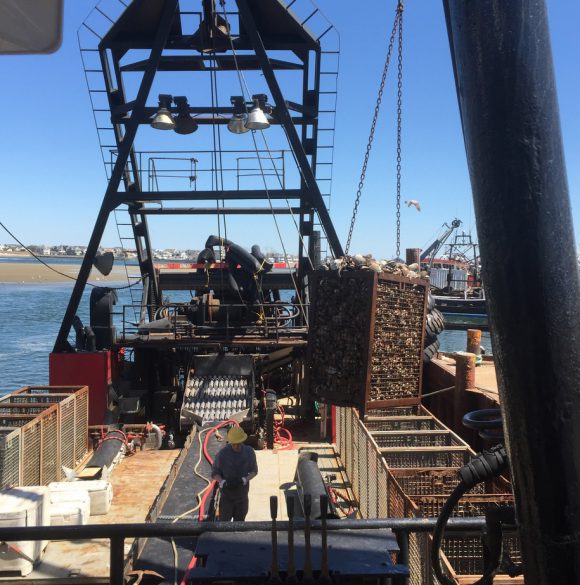
Surfclam vessel offloading, New Jersey. Photo credit: NOAA Fisheries/Peter Plantamura.
Editor’s Note: Surfclams and ocean quahogs represent the largest fisheries in New Jersey in terms of tonnage landed and are a major economic driver along the coast, with major processors located in Cumberland County.
As federally required by the National Marine Fishery Service (NMFS) vessel trip reporting (VTR) program, surfclam and ocean quahog fishermen previously sent reports of their catches for each trip via snail mail to the federal agency. Now, the process has been made easier thanks to a joint venture among the commercial fishing industry, the federal government, and academia, including Rutgers. Haskin Shellfish Research Laboratory (HSRL) scientist Eleanor Bochenek, who directs the Rutgers’ Fisheries Cooperative Center, and HSRL technician and Rutgers graduate student Sean Martin, have collaborated on an improved electronic vessel trip reporting (eVTR) program that fishermen can now email to NMFS when they return to dock or while on open water.
The eVTR program utilizes software called eCLAMS (Electronic Clam Logbook and Account Management Software). Developed by NMFS, this tool provides commercial fishermen a method to electronically report their catches of surfclams and ocean quahogs for each trip, greatly increasing the amount and quality of data utilized by fishery managers. Bochenek and Martin, pursuing a master’s degree in Oceanography, partnered with NMFS Cooperative Fisheries Program scientists to install the software on surfclam and ocean quahog vessels that fish from New Jersey ports. They also assisted with training in the use of the software and help troubleshoot issues as they arise at the dock and on the fishing vessel. NOAA recently reported on the testing of this technology by clamboats.

